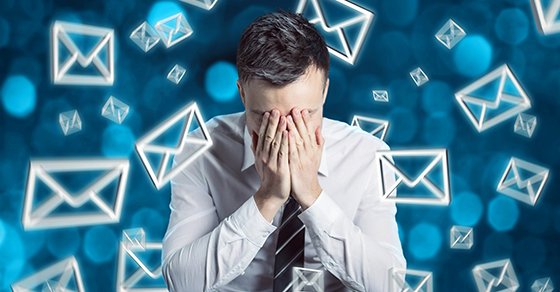Helping Your Employees Make The Most Of Email
 Once a revolutionary breakthrough in communications technology, email is now an afterthought for many people. However, this can cause problems for businesses: Filling up servers, messages getting lost, and employee productivity not reaching its full potential. Although doing so may seem superfluous or antiquated, providing employees with some email management tips can improve efficiency and morale. Obviously, you don’t want to spend a lot of time or money on this, but a “lunch-and-learn” seminar or a series of quick meetings could prove effective and affordable.
Once a revolutionary breakthrough in communications technology, email is now an afterthought for many people. However, this can cause problems for businesses: Filling up servers, messages getting lost, and employee productivity not reaching its full potential. Although doing so may seem superfluous or antiquated, providing employees with some email management tips can improve efficiency and morale. Obviously, you don’t want to spend a lot of time or money on this, but a “lunch-and-learn” seminar or a series of quick meetings could prove effective and affordable.
Here are some email tips with retraining or up-skilling on proper email usage that you might want to consider:
Set Up Project-Specific Folders
Too many users still store emails in one of three places: the in-box, the “Sent” folder or the “Deleted Items” folder. Creating job-specific folders is great for email management as it allows employees to more easily find what they need and to periodically purge unneeded emails once a project or period ends.
Regularly Check Junk Mail Folders & Adjust Filters As Necessary
Like many companies, yours has probably set up junk mail folders to cut down on the number of useless and potentially dangerous emails launched at your staff.
Bear in mind that you may need to periodically adjust the filter settings. Doing so will ensure employees aren’t inadvertently blocking legitimate messages. Ask staffers to check their junk folders and see whether anything important is in them. After setting an acceptable sensitivity level, establish an automatic archiving process to systematically purge junk emails.
Encourage Employees To Hit The Unsubscribe Button.
They’re technically not spam but eventually end up that way. The email marketing newsletters, bulletins and other regular messages that employees signed up for years ago, but no longer use, can clutter up in-boxes and distract workers from their current job duties. As part of their email management regimen, ask every employee to review their subscriptions and get rid of any they’re no longer using.
Refine Distribution Lists
Most businesses long ago established companywide and departmental email distribution lists. But, again, project-specific lists can greatly benefit the work groups that spring up in the normal course of operations. Remind users how to create their own distribution lists. Additionally and equally as important, establish a policy for deleting these lists and the emails associated with them at the appropriate time.
Set Daily Times To Check Email
In the old days, employees might have hovered over their in-boxes, anxiously awaiting new messages and replying to nearly everything that came in. Now the problem may be the opposite.
Staff members may ignore their email for long periods with the popularity of texting, instant messaging, video calls and meetings. Recommend that they check their in-boxes at several specified times during the workday. This way, email won’t be a distraction, but it also won’t be a source of missed internal communications.
Discuss Timely Email Responsiveness
How quickly one should respond to an email depends on various factors. However, if employees are too lax in their response times, it can have a negative impact on the company.
Customers, of course, won’t appreciate a business that takes too long to answer questions or address issues. There might also be frustrations between employees when internal emails are left unread or not replied to.
If necessary, set company policies regarding responsiveness. Generally, business-related emails should be replied to within 24 to 48 hours. However, you may want to tighten up that time frame for customer-facing staff.
